Húsafell is a so-called ‘populated place’, and former priest’s seat in Borgarfjarðar county, which has fostered several personalities and artists. The farm, approximately 100 km2, was a pioneer for the transition from farming to tourism. And it seems to have been veeeery successful, as the farmer has had enough money to buy his own plane and to make his own airstrip (it is less than 2 hours to go by car to Reykjavík)…
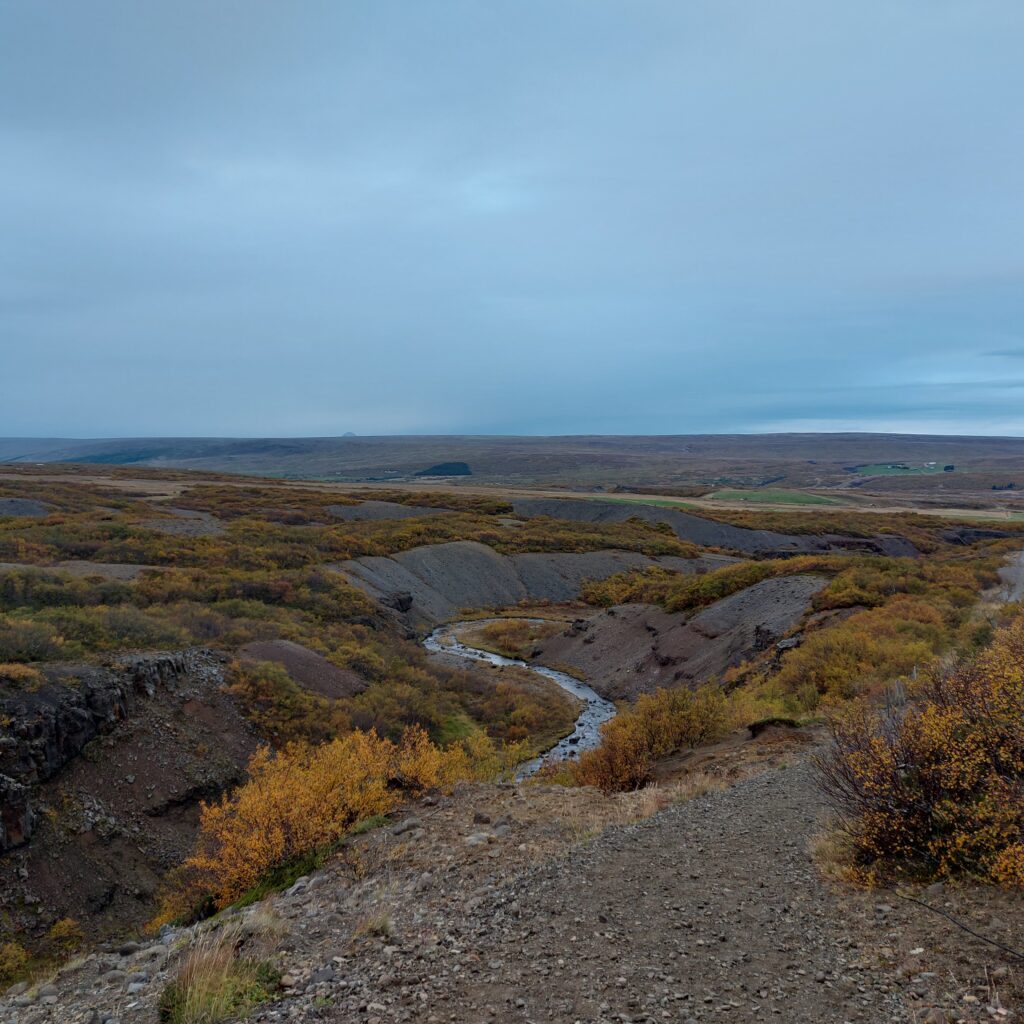
In addition to Langjökull, there are several spectacular tours in the Húsafell area. One opportunity, which we took during the corona, was to visit a lava cave. The longest lava cave in Iceland is Surtshellir (Giant Surtur’s cave) almost 2 km long, while Víðgelmir is the largest (and widest, hence the name). It is still not short, 1.5 km is just fine.
Lava caves are formed when liquid basalt flows out of a volcano and forms a river of molten rock. The sides and top of the river will eventually cool down and solidify, while the river continues to flow in the crust, as inside a pipe. When the volcanic eruption stops, the lava flows out of the ‘pipe’, and what’s left is an empty cave. The volcano that formed Víðgelmir is located 33 km away, and was under Langjökull.
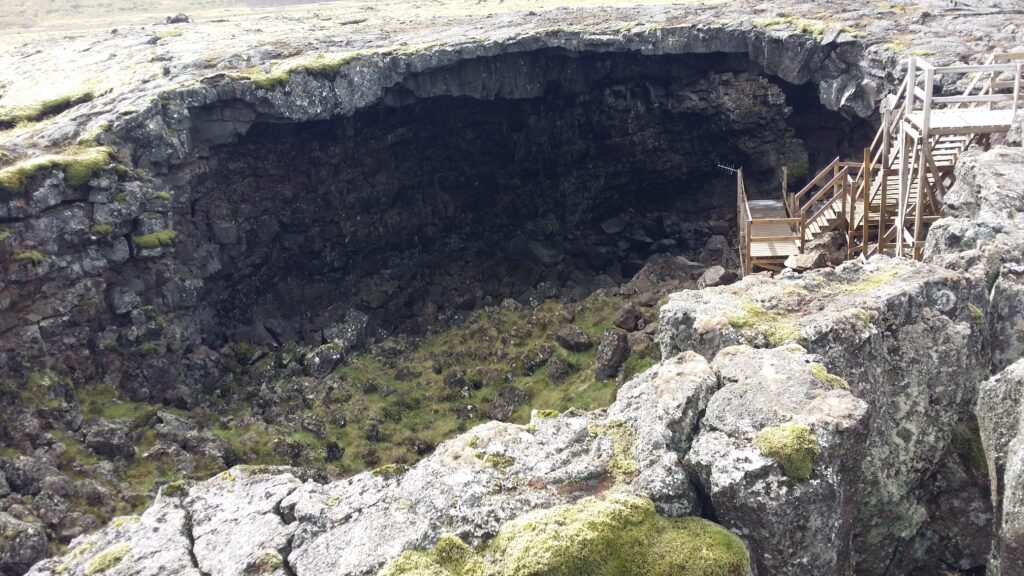
Víðgelmir was formed during a volcanic eruption around 930 AD, i.e. at the end of the Conquest Age. In 1993, bone remains and human belongings were found in the cave, dated 983-986 AD. At that time the cave was still warm, about 20 degrees. No wonder it was nice to live there in the Viking Age. House with central heating fixed and delivered by nature! A (pagan) poem has been written about this volcanic eruption, Hallmundarkviða. Most likely by someone who actually experienced it (!), and Þorvaldur Holbarki (who is mentioned in the Book of Conquest) is a candidate. It is said that he went up to Surtur’s cave and killed the giant that lived there. The trip inside Víðgelmir was both great and interesting. However, our cameras did not cope well with the darkness, so we have very few pictures. The cave was, however, more colorful than expected, and there are both stalagtites and stalagmites, although much has been removed by ravenous visitors. And then there was the fact that the walls looked like melted chocolate…
Unfortunately, there is no water in Víðgelmir, so there was no lava cave bathing. But after a cave trip, time is just right for a bath, and we would suggest a warm bath this time (since the cave is now actually cold). Húsafell Canyon Bad (Giljaböð) from 2019 is a spectacular alternative.
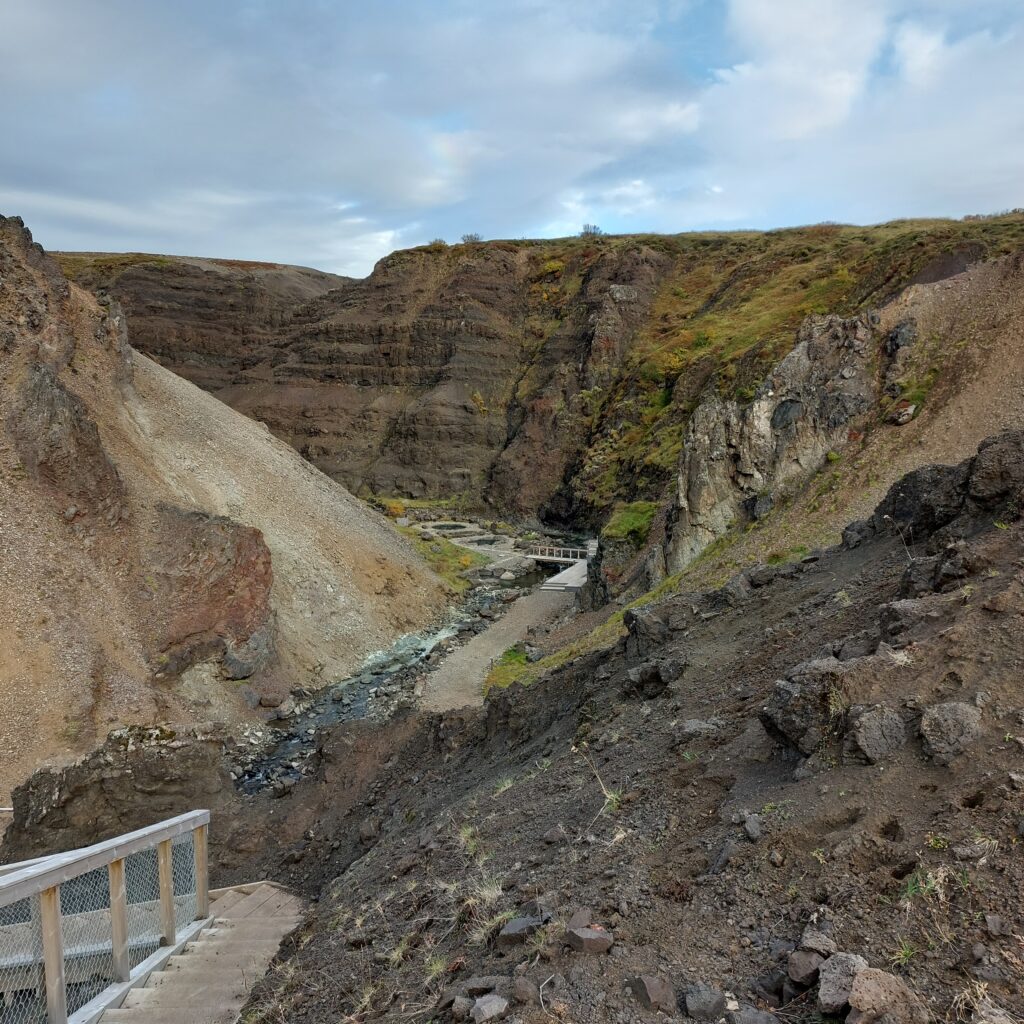
You are transported to the canyon in a minibus, max 20 people (we were 4), and here the farmer Unnar Bergþórsson has really put in a lot of effort to make it all happen. To find hot water, drilling had to be done. And he drilled and drilled, and found heat 8 times, without water. You have to have water in the baths, and luckily he hit the rigth spot on the ninth attempt. Here he found a spring that delivers five liters of 47°C water per second. After 200 m of transport, the water flows into the hot pot at the perfect 39-41 degrees. In Giljaböð there is rough reuse and funny details. We fell for the pegs, made of used horseshoes.
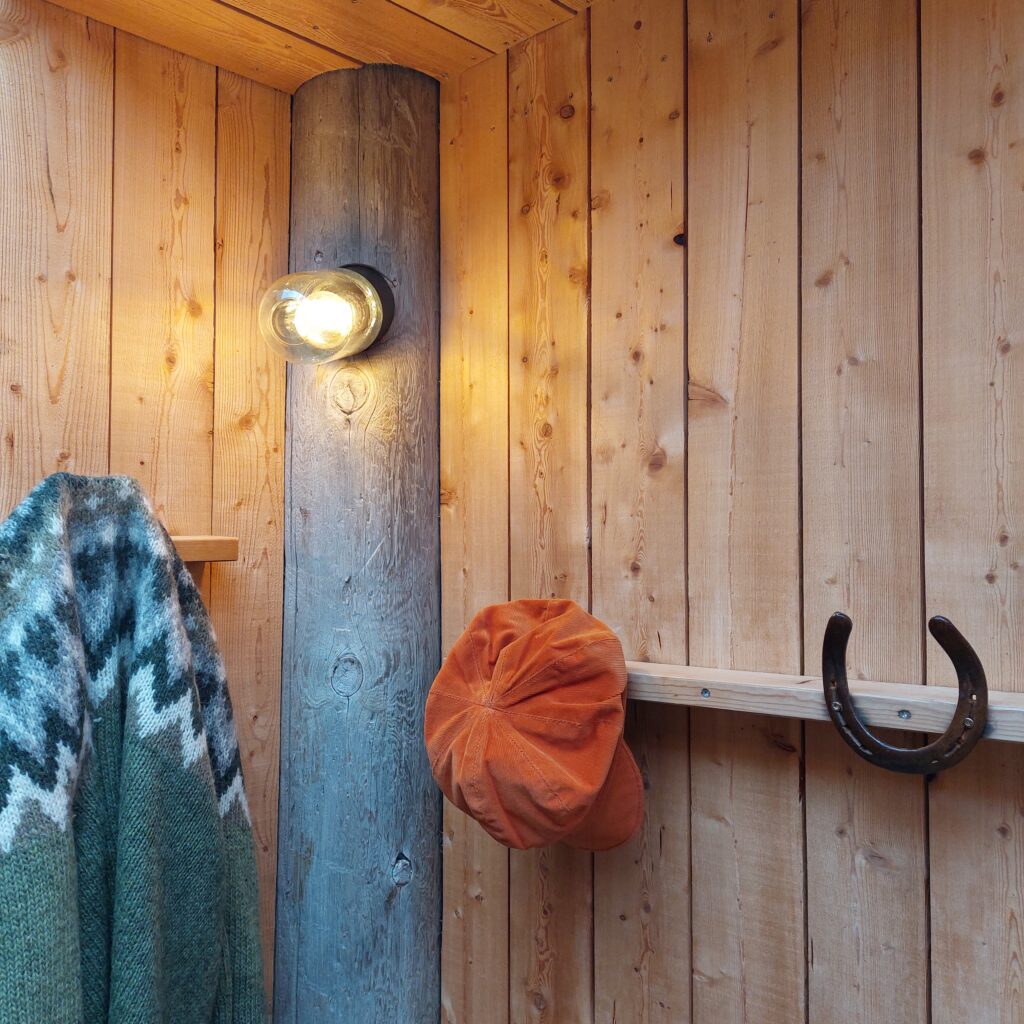
And then there were the closing mechanisms for the doors – a stone and a pulley. Cool!
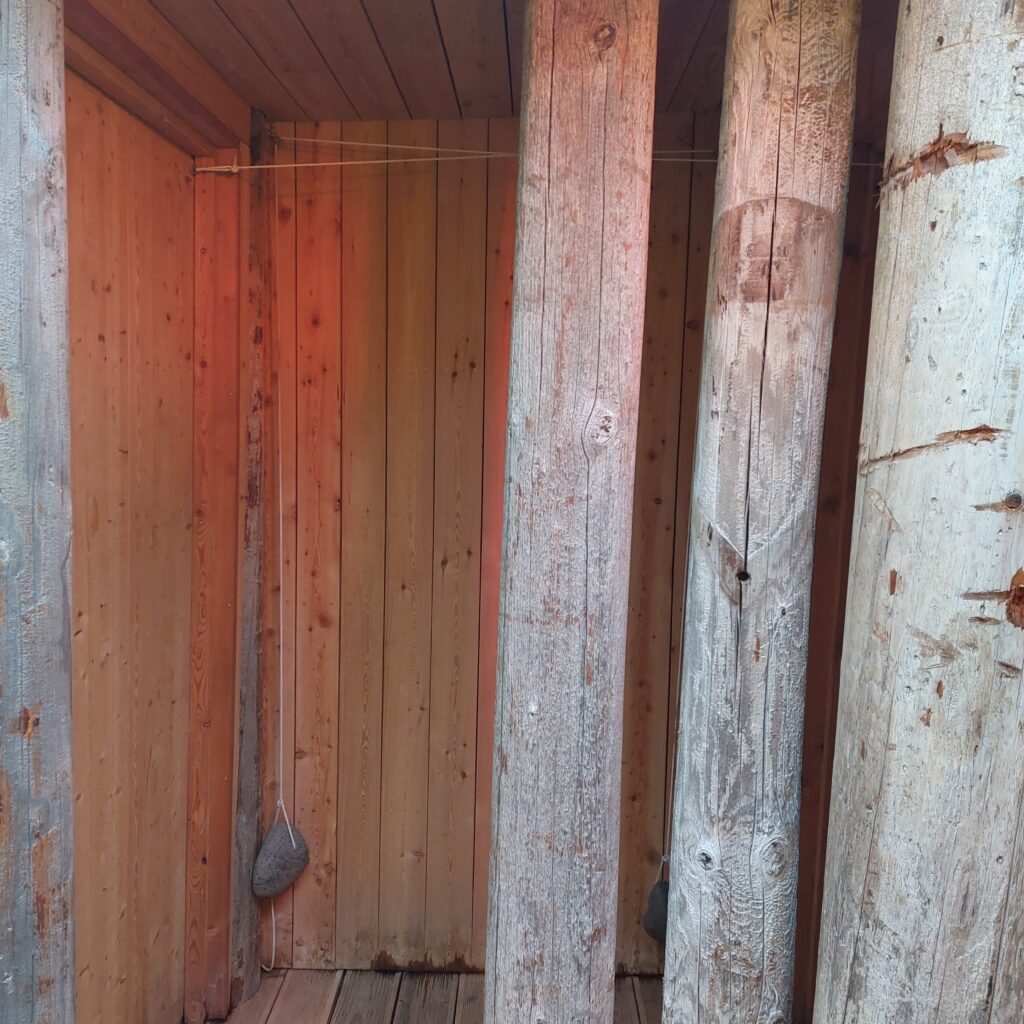
A great bath! Correction, 3 very nice baths. One was down by the river side and had the river temperature (around 10 degrees).
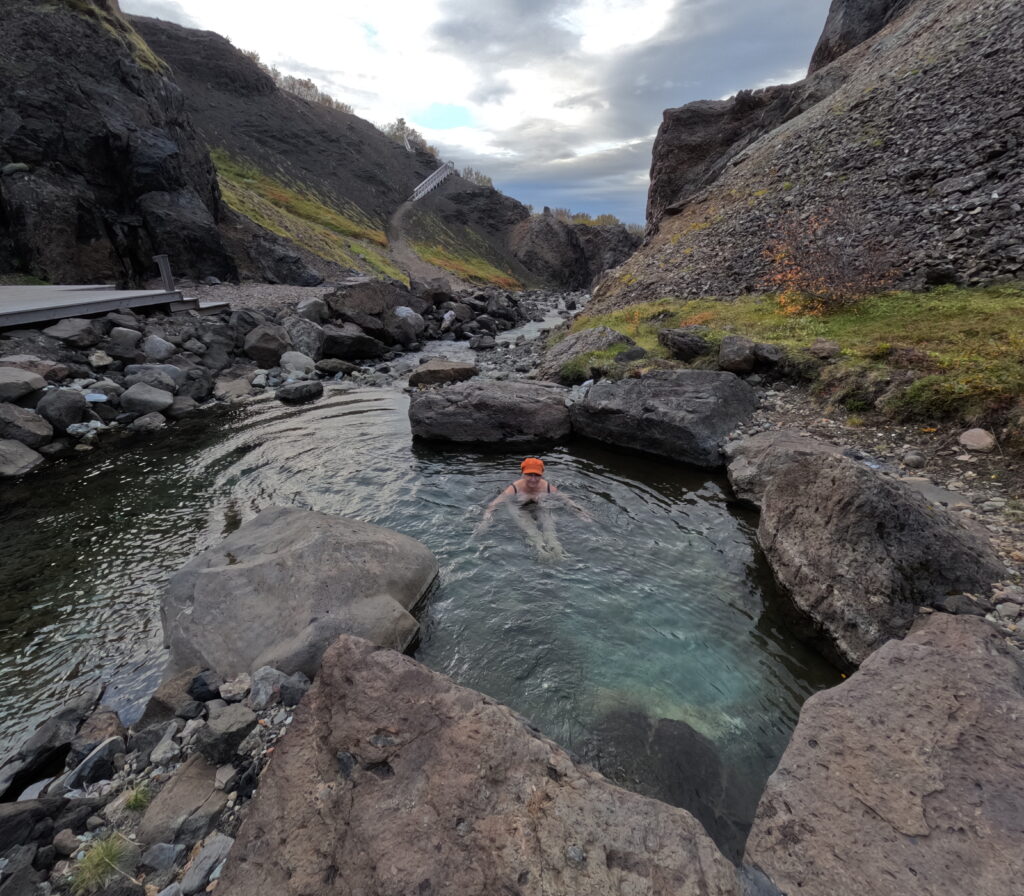
The other was constructed to simulate Snorri Sturluson’s bath at Reykjholt. And it was just right and just a perfect temperature.
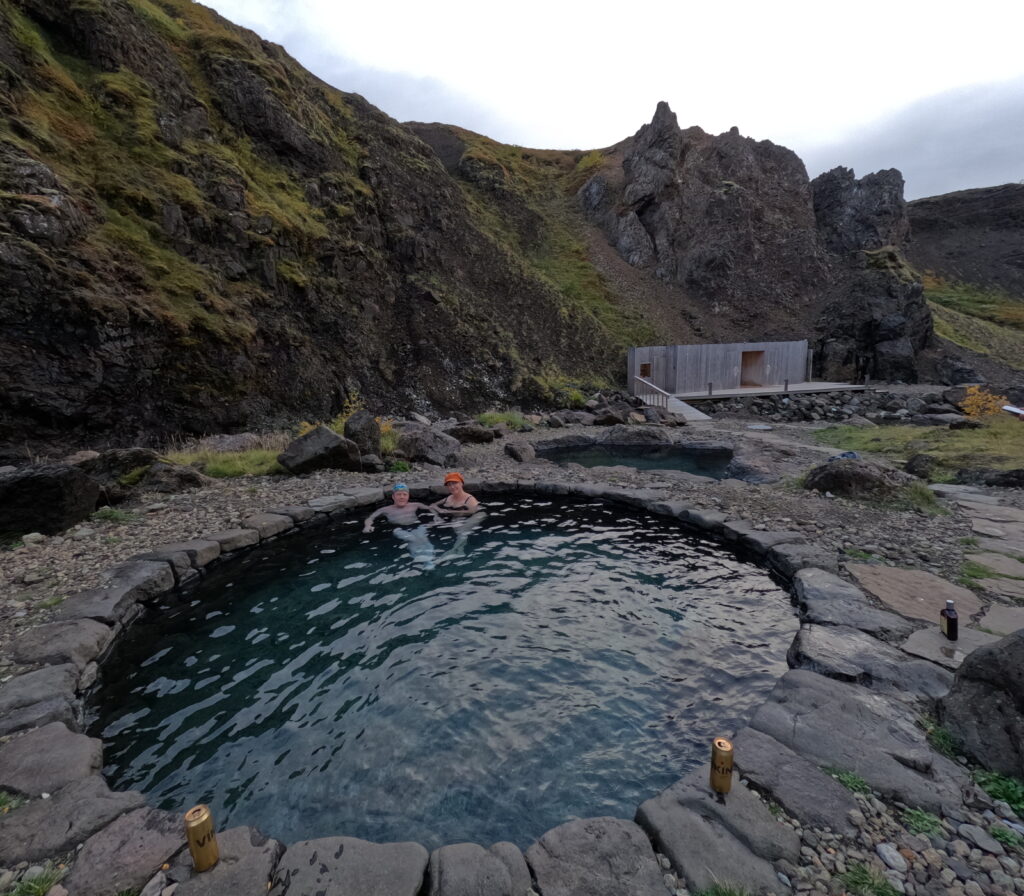
If you want to build a bath like this, you need to know how to put one stone on top of the other. Luckily, they had a local stone stabling expert, as you can see from this underwater picture.
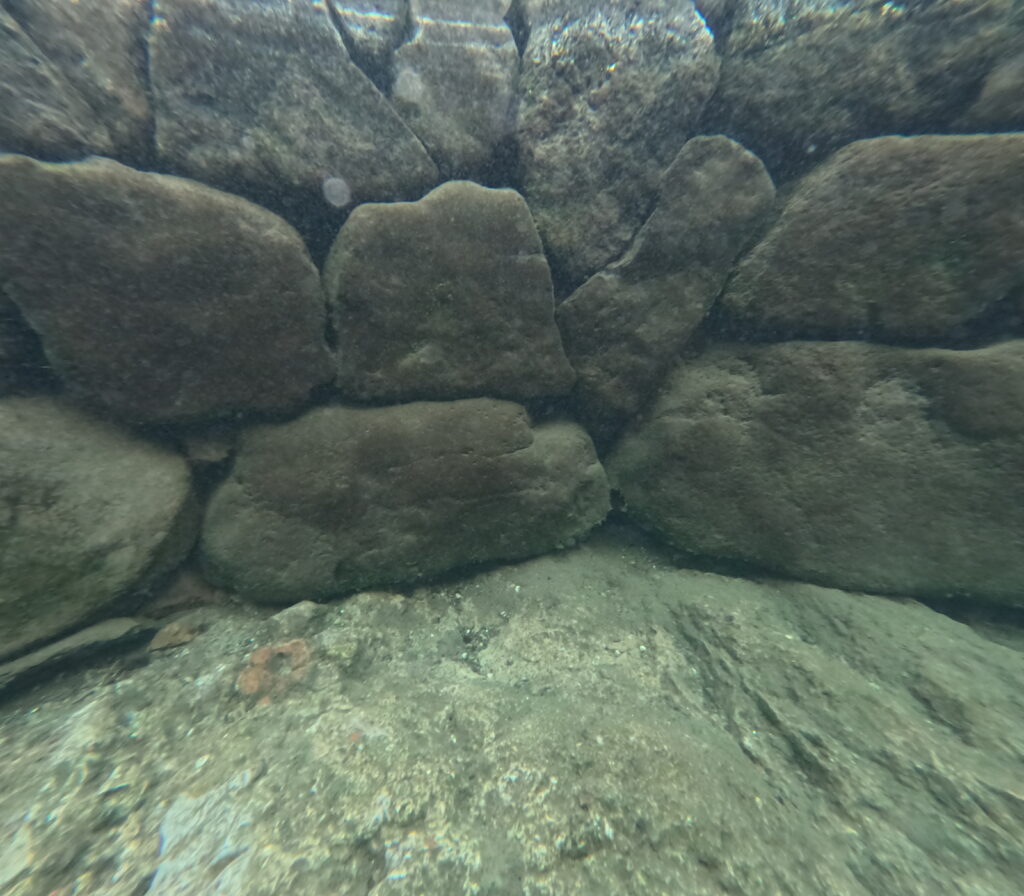
While lying in the bath, you can take a look at the pebbles around you. There are many different stones here. The baths are located in the middle of what was the magma chamber of the 2.5 million-year-old Húsafell Central Vulcano. Small conglomerates are from the magma chamber, but otherwise much of the old volcano has been dislodged into the sea by the ice ages that followed. And then a small river dug and created the beautiful Hringsgil (Ring Gorge), where the baths are located today. Welcome to Giljaböð !